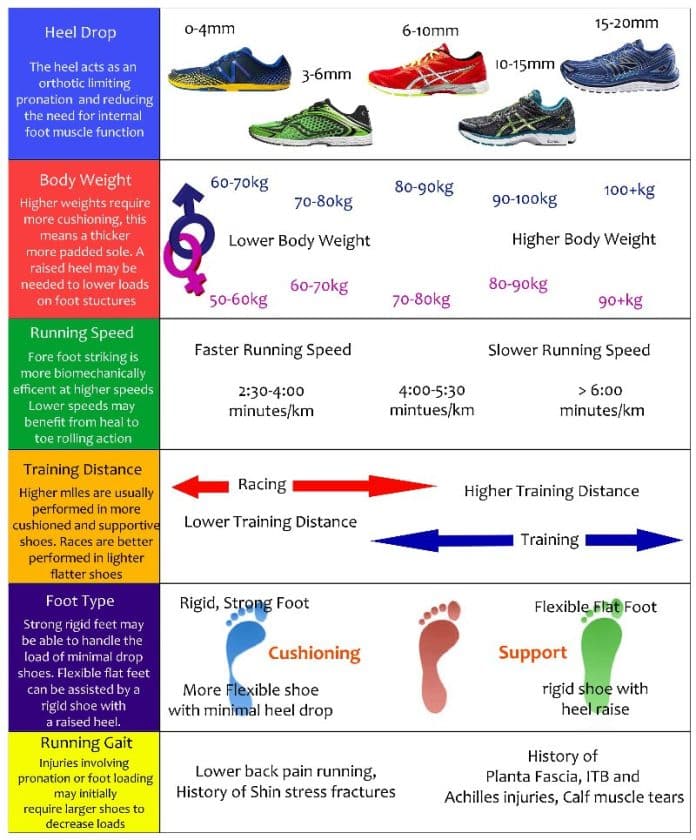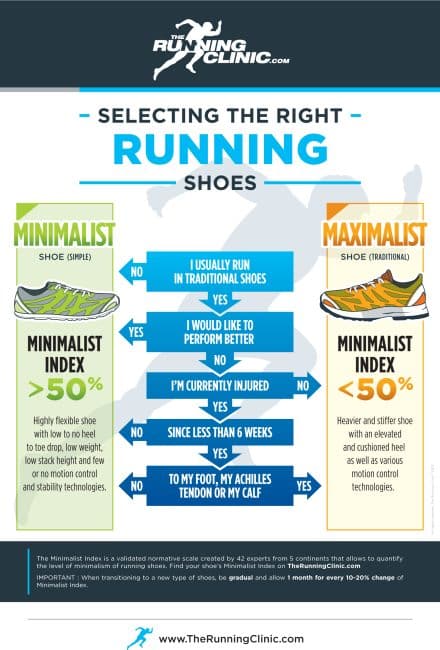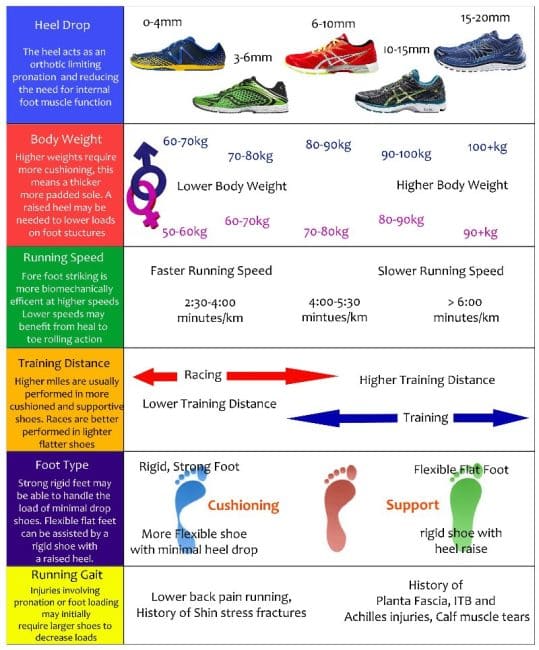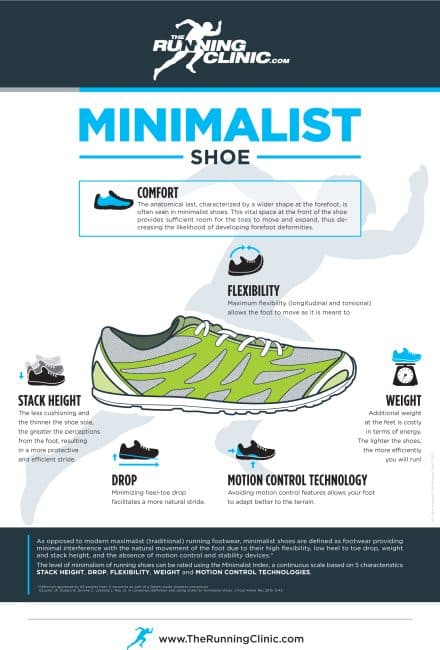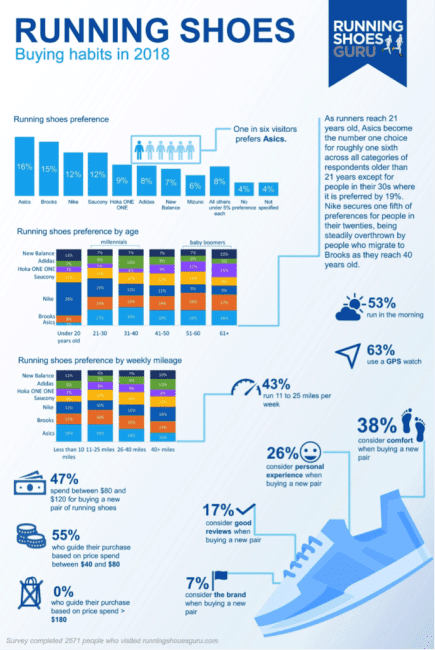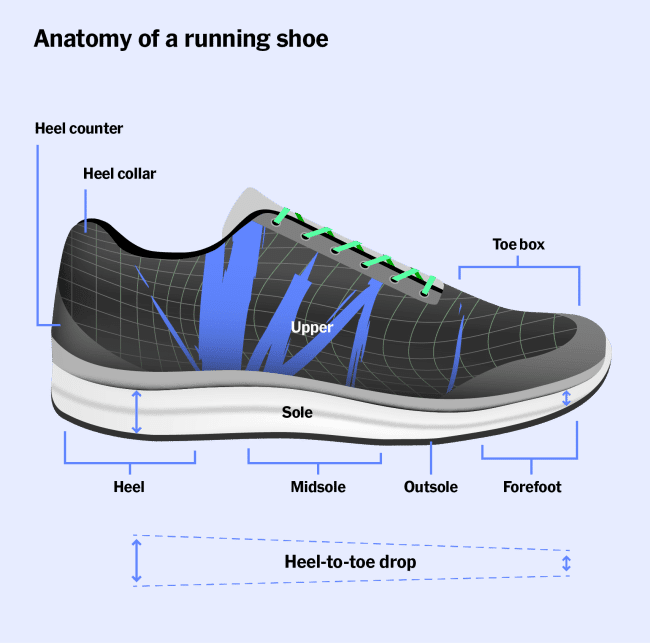When it comes to choosing the perfect running shoes, there are several crucial factors that we must consider to ensure optimal comfort and performance. From finding the right fit to determining the ideal level of cushioning and support, our selection process can greatly impact our running experience. So, whether you’re a seasoned marathoner or a casual jogger, making an informed decision about your running shoes is essential. In this article, we will explore the key factors that should be taken into account when selecting the perfect pair of running shoes. When choosing running shoes, there are several important factors to consider in order to find the right fit for your feet and running style. From the length and width to the toe box and arch support, each aspect of the shoe can play a role in how comfortable and supportive it is for your feet.
Review contents
Fit
The fit of a running shoe is crucial for optimal performance and injury prevention. It is important to find a shoe that fits properly, with enough room for your toes to move comfortably without being too loose or too tight.
Length
When it comes to length, make sure there is enough space between the tip of your biggest toe and the end of the shoe. You should be able to wiggle your toes without feeling cramped.
Width
The width of the shoe is also important, as it determines how snugly or loosely the shoe fits around the widest part of your foot. It is best to choose a shoe with a width that matches the width of your foot, ensuring a comfortable and secure fit.
Toe Box
The toe box refers to the space at the front of the shoe. It should have enough room to allow your toes to move naturally and splay out with each step. Avoid shoes with a narrow or cramped toe box, as it can lead to discomfort and potential foot issues.
Arch Support
Different runners have different arch types, and finding a shoe with adequate arch support is essential for maintaining proper foot alignment and stability. Whether you have low, normal, or high arches, look for shoes that offer the appropriate level of arch support for your specific needs.
Cushioning
Cushioning is another important factor to consider in running shoes, as it provides impact absorption and can make your runs more comfortable. The right amount and type of cushioning can help reduce the risk of injuries and minimize fatigue.
Material
The material used for cushioning in running shoes can vary widely. Some popular options include foam, gel, and air. Foam cushioning is often lightweight and provides good support, while gel cushioning offers enhanced shock absorption. Air cushioning, on the other hand, provides a responsive and bouncy feel.
Thickness
The thickness of the cushioning also plays a role in how much impact it can absorb. Thicker cushioning tends to provide more protection against hard surfaces, but it can also add extra weight to the shoe. Strike a balance between cushioning thickness and overall weight to find the right combination for your needs.
Type
Different running shoe models may offer different types of cushioning systems. Some shoes have a uniform cushioning throughout, while others may have specific areas of increased cushioning in the heel or forefoot. Consider the areas of your feet that require more cushioning and choose a shoe that provides the necessary support in those areas.
This image is property of az675379.vo.msecnd.net.
Stability
Stability in running shoes refers to their ability to keep your foot in a neutral position while running. This is especially important for runners with overpronation or underpronation issues.
Motion Control
Motion control shoes are specifically designed for runners who overpronate, meaning their feet roll inward excessively when they land. They often feature a firm midsole and extra support to guide the foot into a more neutral position, reducing the risk of injury.
Pronation
Pronation refers to the natural inward rolling motion of the foot during the running gait cycle. Neutral shoes are designed for runners with a normal pronation pattern, offering a good balance between cushioning and stability. For runners with underpronation (supination), which is when the foot rolls outward, cushioned shoes with flexibility may be more suitable.
Flexibility
The flexibility of running shoes determines how easily the shoe bends and moves with your foot. A shoe that is too stiff can restrict natural foot movement, while a shoe that is too flexible may not offer enough support.
Sole
The flexibility of the sole is an important consideration when choosing running shoes. The sole should be able to bend and flex at the forefoot area, allowing for a smooth and natural running stride. However, the sole should also provide enough rigidity at the midfoot and heel to offer stability and support.
Upper
The upper part of the shoe is also a factor in flexibility. Look for shoes with uppers that are made of flexible materials, allowing for easy movement of the foot. Breathable mesh uppers often offer a good balance of flexibility and breathability.
This image is property of o.b5z.net.
Breathability
Breathability is important for keeping your feet cool and comfortable during your runs, as it allows air to flow in and out of the shoe, preventing excessive sweating and odor.
Material
The material used in the construction of the shoe plays a significant role in its breathability. Mesh materials are commonly used in running shoes as they are lightweight and allow for excellent airflow. Look for shoes with a breathable upper material that promotes ventilation.
Mesh
The use of mesh in running shoes allows for maximum breathability. Mesh uppers are lightweight and feature tiny pores that allow air to circulate, keeping your feet cool and dry. Shoes with mesh panels or a full mesh upper are a great choice for hot and humid climates.
Weight
The weight of the running shoe can have an impact on your running performance. The right weight will depend on your personal preferences, running style, and the type of terrain you typically run on.
Lightweight
Lightweight running shoes are designed for speed and agility. They prioritize minimal weight and flexibility, making them ideal for fast-paced runs and races. If you enjoy a lightweight and responsive feel, these shoes may be a good choice for you.
Midweight
Midweight running shoes strike a balance between lightweight design and ample cushioning. They offer a good combination of support and flexibility, making them suitable for most runners and training sessions.
Heavyweight
Heavyweight running shoes prioritize maximum cushioning and support, often at the expense of weight. These shoes are typically preferred by runners who require extra cushioning for longer distances or for those with a history of foot or leg injuries.
This image is property of az675379.vo.msecnd.net.
Durability
Durability is an important factor in running shoes, as you want them to withstand the demands of your running routine. A well-constructed shoe will last longer, saving you money in the long run.
Outsole
The durability of the outsole is crucial, as it is the part of the shoe that comes into direct contact with the ground. Look for shoes with a durable rubber outsole that can withstand the wear and tear of regular running. A shoe with a high-quality outsole will provide excellent traction and grip, ensuring stability on various terrains.
Upper
The upper of the shoe should also be durable and resistant to abrasion. Reinforced overlays and sturdy materials can enhance the lifespan of the shoe, preventing early wear and tear. Consider the materials used in the upper construction and opt for shoes that offer durability without sacrificing comfort.
Seams
The seams of the shoe contribute to its overall durability. Look for shoes with strong and secure stitching, as well as reinforced areas where the upper meets the sole. This will help prevent separation and ensure that the shoe remains intact for a longer period of time.
Terrain
The type of terrain you typically run on should also influence your choice of running shoes. Different terrains require different levels of traction, stability, and protection.
Road
If you primarily run on roads or paved surfaces, choosing shoes with a road-specific outsole is recommended. These outsoles are designed to provide optimal grip and flexibility on hard surfaces, allowing for a smooth and efficient stride.
Trail
For off-road running on trails, durable and grippy outsoles are essential. Look for shoes with aggressive lug patterns that provide traction on uneven terrain and protect your feet from rocks, roots, and other obstacles.
Track
Track running shoes are specifically designed for use on synthetic tracks in competitive races. They prioritize lightweight construction, minimal cushioning, and a spike plate for maximum grip and traction on the track.
Minimalist
Minimalist running shoes are characterized by their lightweight and low-to-the-ground design. These shoes aim to mimic barefoot running, promoting natural foot movement and building foot strength. However, they may not offer as much cushioning and support as traditional running shoes, so they are best suited for experienced runners with strong feet and good running form.
This image is property of blog.therunexperience.com.
Foot Type
Understanding your foot type can help you find running shoes that provide adequate support and minimize the risk of injury. The three main foot types are neutral, supination, and overpronation.
Neutral
Runners with a neutral foot type have a normal foot arch and a natural inward roll of the foot (pronation) during the running gait cycle. Most running shoes are designed with a neutral foot in mind, offering a good balance of cushioning and stability.
Supination
Supination, also known as underpronation, occurs when the foot rolls outward excessively during the running gait cycle. Runners with supination may benefit from shoes with extra cushioning and flexibility to compensate for the natural lack of inward roll.
Overpronation
Overpronation is characterized by an excessive inward roll of the foot during the running gait cycle. Runners with overpronation may require motion control or stability shoes that offer additional support and control to prevent overpronation and promote a neutral foot position.
Price
Price is a practical factor to consider when choosing running shoes, as it helps determine the quality, durability, and features you can expect from a particular pair.
Budget
Budget-friendly running shoes can still offer good quality and performance. Look for shoes that prioritize essential features like proper fit, cushioning, and durability, without unnecessary frills or high-end materials.
Mid-range
Mid-range running shoes often strike a balance between affordability and performance. They offer a good combination of comfort, support, and durability, making them suitable for most runners.
Premium
Premium running shoes are typically higher-priced due to their advanced features, high-quality materials, and specialized construction. These shoes may offer cutting-edge technologies and advanced cushioning systems, ideal for serious runners or those with specific foot conditions.
Remember, finding the right pair of running shoes is a personal journey. It is important to consider your individual foot characteristics, running style, and preferences. Trying on different models and seeking professional advice if needed can help you make an informed decision and find the perfect running shoes that will accompany you on countless enjoyable runs. Happy running!
This image is property of cdn.thewirecutter.com.

